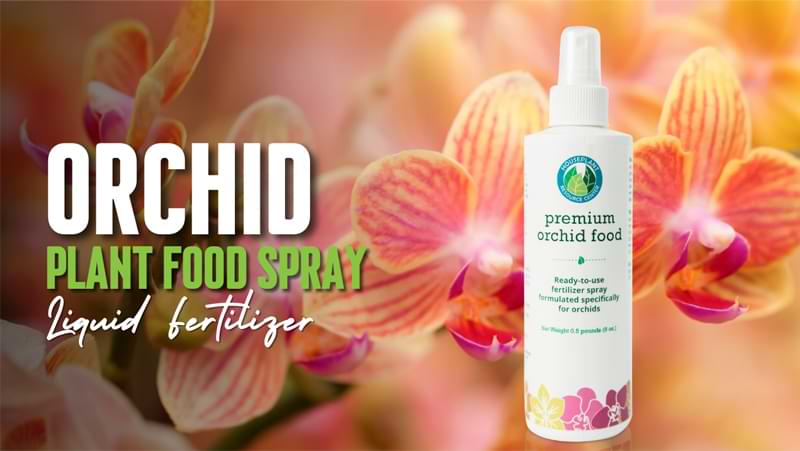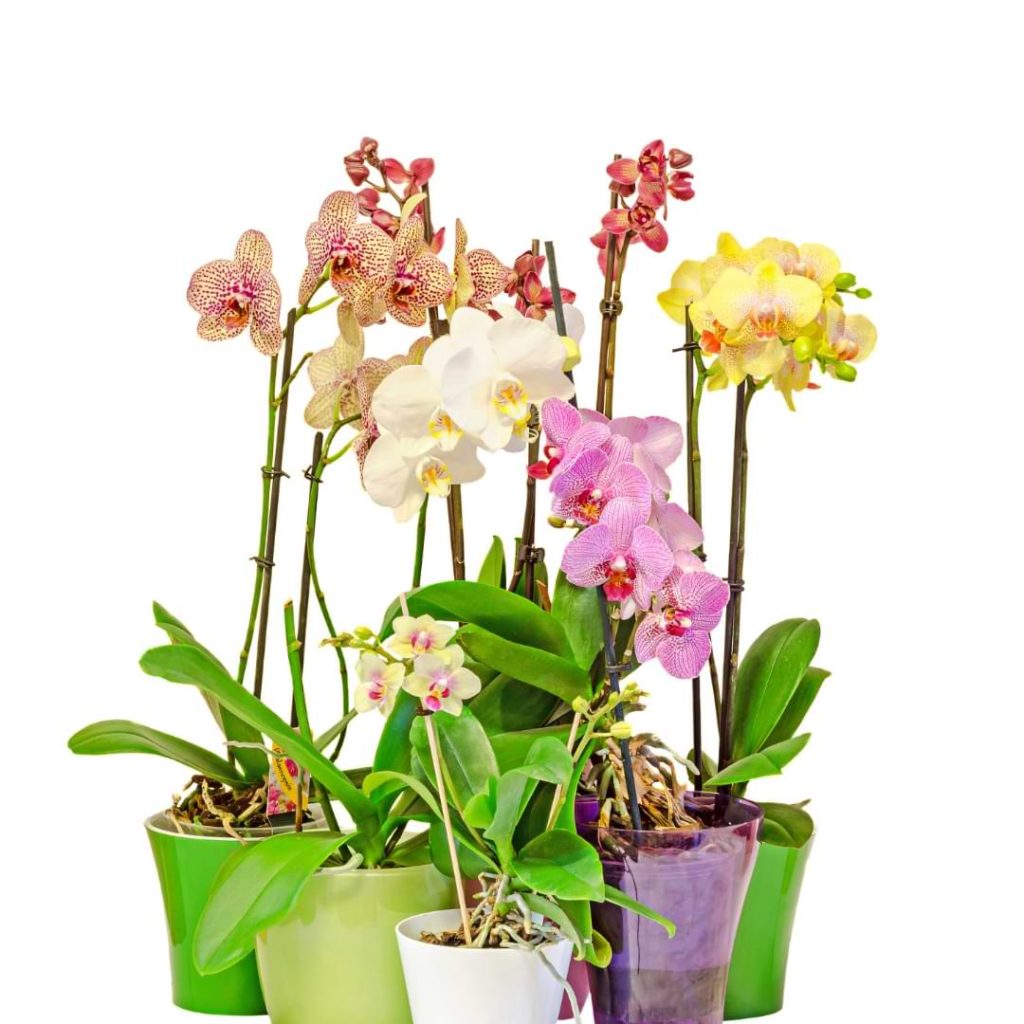Do you have a difficult time keeping all the different types of orchids straight? If so, it’s not your fault. Orchids are one of the largest families of flowering plants. In the world, there are over 20,000 types of orchids. Only a small fraction of these orchids are able to survive as houseplants, but given just how many types of orchids, this small fraction still gives orchid lovers plenty of options.
Most orchids are native to tropical rainforests and grasslands, but there are also orchids that are native to the United States.
Orchids are incredibly popular (and beautiful) houseplants, but even the most enthusiastic orchid lover sometimes needs a reference when it comes to orchid identification. Keep reading for a chart and information that breaks down the classification of orchids to make it easier for you to identify your favorite orchids.
Orchid Identification Chart
For visual reference, here’s a chart with all the American orchids. Note that this doesn’t have every single orchid type, just the American ones. As you’ll see while reading the rest of this article, if every type of orchid were included, the chart would have way more information than people could realistically process.

Types of Orchid
To start off, let’s clarify how orchids are classified. The classification begins with the orchid family in general. Then orchids are divided into 5 subfamilies, which are then divided into smaller groups called tribes.
While there are further divisions in orchid classification, we’ll just stick to these first few divisions.
Taxonomists don’t always agree over exactly how different types of orchids should be classified. Also, with so many types of orchids, it can be difficult to study every single type of orchid. It’s not uncommon for orchids to be reclassified, so it is possible that some of the specific classifications we discuss below may change with time (or may currently be in dispute).

Family
All orchids belong to the Orchidaceae family. This encompasses all 20,000-plus species of orchids.
Orchids are characterized by having bilaterally symmetrical flowers with three petals and three sepals. Orchid flowers’ forms and scents can be dramatically different. The plants are either epiphytic or terrestrial.
Almost every continent has some type of orchid, but some areas have significantly more orchid types than others.
Subfamily
The Orchidaceae family is divided into 5 subfamilies. These subfamilies are typically based on the physical form of the orchid and its flowers.
Tribe
Each subfamily is further divided into tribes. Tribes are typically based on genetic properties, but the process of collecting this data is slow. It is not unusual for orchids (or entire tribes) to be reclassified as new information becomes available.
Orchid Subfamilies
Orchids are divided into 5 subfamilies. For easy reference, here are the most popular types of orchids generally kept as houseplants and to which subfamily they belong:
Phalaenopsis – Subfamily: Higher Epidendroideae
Brassavola – Subfamily: Epidendroideae
Catasetum – Subfamily: Higher Epidendroideae
Cattleya – Subfamily: Epidendroideae
Cycnoches – Subfamily: Higher Epidendroideae
Cymbidium – Subfamily: Higher Epidendroideae
Cypripedium – Subfamily: Cypripedioideae
Dendrobium – Subfamily: Epidendroideae
Encyclia – Subfamily: Epidendroideae
Vanda – Subfamily: Higher Epidendroideae
You probably noticed that most of these popular houseplant orchids belong to either Higher Epidendroideae or Epidendroideae. These are the two largest subfamilies and contain the majority of orchid types. Keep reading to find out more about the characteristics of different orchid subfamilies and tribes.
Subfamily Cypripedioideae
This subfamily is commonly referred to as Lady’s Slipper orchids due to the flowers’ resemblance to slipper-shaped pouches. The pouch plays an important role for this type of orchid. It forces insects to climb further into the flowers, which aids in collecting or depositing pollen. This feature helps ensure that the flower is fertilized.
An usual characteristic of Cypripedioideae orchids is that they have two lateral, fertile anthers.
Tribe Cypripedieae
Orchids in this tribe can be found throughout Europe, Asia, and America. These are considered the most primitive orchids. Cypripedieae orchids are monophyletic meaning that they are descended from a common ancestral group, and there is some debate over whether or not these plants truly belong in the Orchidaceae family.
Subfamily Vanilloideae
Initially thought to be unrelated to the Orchidaceae family, this subfamily only includes orchids that come from the ancestor of the plant that today produces vanilla. Orchids from this subfamily can be found throughout Asia, Australia, and the Americas.
Tribe Pogonieae
Orchids in the Pogonieae tribe are recognizable by their fringed or jagged lip margin. The flowers are usually a pink or purple hue.
Tribe Vanilleae
Orchids in the Vanilleae tribe have lips without a spur. These plants usually have long, thick, succulent vines. Plants from this tribe are usually difficult to keep happy in household conditions, but they are generally very beautiful. The tribe includes V. planifolia, the plant that is used to produce commercial vanilla flavoring.
Subfamily Orchidoideae
This subfamily, also known as orchidoid orchids, consists mostly of orchids with only a single fertile anther. This large family has showy flowers on the ends of its stems that are in an erect or arching pattern. Orchids from this family are found all over the world.
Tribe Diceratosteleae
The only known species of this tribe is Diceratostele gabonensis, an orchid that can be found in western and central Africa.
Tribe Codonorchideae
This tribe consists of only two known orchids: Codonorchis canisioi, native to Brazil, and Codonorchis lessonii, native to Argentina, Chile, and the Falkland Islands.
Tribe Cranichideae
With around 1,700 species, this tribe is characteristized by small tube-shaped flowers that barely open and soft leaves. Members of this tribe can be found on all continents with the exception of Antarctica, mostly in tropical and subtropical regions.
Tribe Diseae
Most members of this tribe grow natively in southern Africa or Madagascar. In fact, more than half of all orchids in southern Africa are from the tribe Diseae.
Tribe Diurideae
As of 2018, there is still some dispute over exactly which orchids belong in this tribe, which contains about 550 species. Most of its members are native to Australia, New Zealand, and the surrounding islands.
Tribe Orchideae
The largest tribe within its subfamily, this tribe has many flower forms. Usually you can recognize this tribe by its members’ three-lobed lip (generally, but not always) lacking a basal spur, prominent caudicle, and erect anthers. Orchids in this tribe are native to both temperate and tropical regions.
Subfamily Epidendroideae
Representing over 80 percent of orchid species with 10,000 different types of orchids, the subfamily Epidendroideae is by far the largest subfamily. Epidendroideae orchids are tropical epiphytes (meaning they do not naturally grow in soil, but instead anchor themselves to trees or other objects) but some are terrestrial. This subfamily is characterized by a single anther that is incumbent (not at the normal erect position compared to other orchids).
Tribe Arethuseae
As you might have noticed, with so many orchid types, even experts dispute exactly how to categorize orchids. This tribe was first categorized in 1840 by John Lindey but was later recategorized by Robert Dressler over 100 years later. Most orchids in this tribe can be found in their native environment in Asia, New Guinea, the Pacific Islands, North America, and the Caribbean.
Calypsoeae
This tribe was previously categorized as tribe Calypsoeae, but has been reclassified. Most of the orchids in this tribe are terrestrial.
Tribe Cryptarrheneae
Another small tribe, this one consists of only three species: Cryptarrhena guatemalensis, Cyptarrhena kegelli, and Cryptarrhena lunata.
Tribe Coelogyneae
This tribe with over 400 species continues to expand as experts reclassify orchid types that fit within its characteristics. These orchids are generally found in Old World tropical and subtropical areas.
Tribe Epidendraea
Making up the largest portion of subfamily Epidendroideae, this tribe has well over 8,000 species including around 1,400 species that are tropical American epiphytes. The well-known orchid genus Brassavola falls under this tribe.
Tribe Epipogieae
This tribe contains two genera, Epipogium and Stereosandra. Epipogium are commonly known as ghost orchids because these orchids are pale and short-lived, seeming to appear and disappear rapidly.
Tribe Gastrodieae
This is a small tribe in the subfamily Epidendroideae. There is some debate over which orchids should be included under this tribe.
Tribe Malaxideae
There are over 900 orchid species currently included in this tribe, which can be found in both temperate and tropical areas around the world. They generally have small flowers that develop on the ends of their stems.
Tribe Neottieae
Found throughout the world, members of this tribe do best in temperate environments and can be recognized by their fleshy, slender roots. The tribe takes its name from the Greek “neottia,” which means “nest” because plants in this tribe typically have a mass of roots that somewhat resemble a bird’s nest.
Tribe Podochileae
This tribe includes Dendrobium orchids, a favorite among orchid lovers.
Tribe Triphoreae
Characterized by a slender stem, fleshy roots, and small flowers, this tribe consists of about 28-30 species.
Tribe Tropidieae
Formerly thought to be part of the subfamily Sprinathoideae, orchids in this tribe are now recognized as part of the subfamily Epidendroideae. Orchids in this tribe are characterized by loose pollen and erect anthers. Visually, these orchids have pale-green, white, or yellow flowers that are clustered around the main stem.
Tribe Xerorchideae
This tribe consists of primitive, terrestrial orchids that are native to South America.
Subfamily Higher Epidendroideae
Previously known as Vandoideae, this subfamily is the second largest subfamily, containing over 5,000 species. Most orchids in this subfamily are epiphytes, but not all are. They have a main stem that grows in one direction.
Tribe Cymbidieae
This tribe’s orchids display the unique feature of having two masses of pollen grains (known as pollinia) and displaying sympodial growth. These orchids are mainly found in tropical regions around the world.
Tribe Vandeae
With almost 2,000 species, tribe Vandeae is relatively large. The classification for this tribe is based mostly on floral morphology, referring to the form of the flowers. These orchids are epiphytes. The popular Phalaenopsis orchid falls into this tribe.
Tribe Maxillarieae
With around 1,000 species, this tribe consists mostly of orchids native to tropical areas in the Americas. Which orchid variety is your favorite to have in your home?
Join Our Orchid Care Facebook Community
In our Facebook group of orchid lovers, we’re dedicated to creating a rich and engaging environment where plant lovers can come together and share tips, tricks, and experiences.
If you’re an orchid lover, come join our Facebook community! We can’t wait to celebrate your successes and help you troubleshoot your care routine.
For continued success, you can explore our other articles or visit our online shop for plant care products that are sure to keep your plants boasting rich green leaves and big, bountiful blooms year-round.
More Great Orchid Resources



